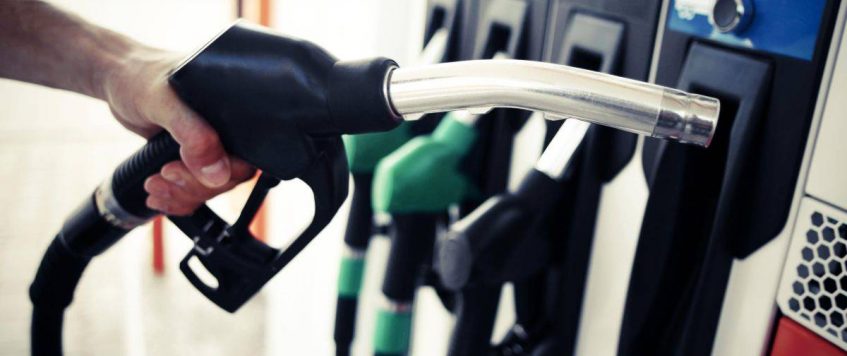-
01
Mar
Parcel Shippers to Feel More Surcharge Pain
Time was that fuel surcharges were straight pass-through levies from the carriers to their customers. Surcharges accurately reflected a carrier’s fuel costs. Indices that set the surcharges were adjusted up or down depending on the direction of diesel and jet fuel prices.
Those days are long gone. Today, carriers routinely arbitrage fuel prices and surcharges to wring every last revenue dollar out of their shipments. In the parcel-delivery sector, which is still dominated by FedEx Corp. (NYSE: FDX) and UPS Inc. (NYSE: UPS), there isn’t an attempt at subtlety.
The two giants adjust their indexes whenever they want. They base their surcharges on diesel and jet fuel price bands of their own choosing. UPS has hiked its surcharge percentages three times since last August.
Users of UPS’ ground delivery and SurePost service in conjunction with the U.S. Postal Service currently pay a 12.75% fuel surcharge based on the nationwide on-highway diesel price of $4.03 a gallon set by the Department of Energy’s Energy Information Administration (EIA).
The price is set each Monday, and the next adjustment will incorporate the impact of Russia’s invasion of Ukraine on fuel prices. UPS’ ground delivery surcharge will climb to 13% should diesel prices hit $4.10 a gallon or higher on Monday.
Mike Erickson, president of AFMS LCC, a parcel consultancy, said he expects surcharge levels to “skyrocket” once the impact of the Russian invasion is reflected in Monday’s prices.
Small to midsize shippers have no recourse but to pay what the carriers demand. Bigger enterprise shippers must generate between $10 million and $20 million in shipping spend for either of the carriers to agree to negotiate fuel surcharge reductions.
The silent killer for shippers is that virtually every delivery surcharge — and there are dozens of them — has a fuel surcharge component attached to it. This “death by a thousand cuts” strategy, combined with oil prices that have climbed rapidly in recent months, has made fuel surcharges a budget buster for shippers.
For example, a good-sized FedEx customer and a Shipware client devoted about one-third of its 2020 surcharge expense to fuel, according to Karl Wheeler, senior consultant for professional services at Shipware and the firm’s point person on the issue. In 2021, that figure jumped to 56%, Wheeler said.
Fuel surcharges were relatively stable in 2020, a year when diesel and jet fuel prices collapsed during the early months of the COVID-19 pandemic before recovering into the fall and winter. Last year was a different story, with fuel prices and surcharges climbing from the end of the first quarter on. Prices have spiked anew in 2022, driven higher by concerns that geopolitical turmoil in Europe will crimp energy supplies.
It will be difficult to pull the carriers away from the fuel surcharge trough once fuel prices begin to decline. In UPS’ fourth quarter, fuel surcharges accounted for nearly 40% of its year-on-year revenue per-package growth in its U.S. ground-parcel operations, the company said during its analyst call last month.
That could explain why fuel surcharges have risen at a much faster pace than fuel prices, and why the higher surcharge levels might not be so fast to recede even if fuel prices do. Diesel prices were calculated at $3.61 a gallon as of the first week of this January, compared to $3.08 in the first week of January 2020. Despite all the gyrations during that period, fuel prices rose about 17.3%.
However, UPS’ diesel surcharge levels rose 36.7% from mid-August to Jan. 3 based on prices sitting at a two-year average of $2.93 a gallon, according to Wheeler’s calculations of the historical distribution of prices. The increases reflect the three upward surcharge bumps starting in August.
With demand running strong and energy supplies tight well before the Russian invasion, it’s hard to imagine prices descending into the high $2 a gallon range anytime soon. Yet should that happen, the carriers would still be making out like bandits, Wheeler reckoned. On Aug. 16, UPS’ diesel surcharge was at 7.5%. By early January, the surcharge had climbed to 10.25%. Even if prices fall to the two-year median threshold, UPS will reap outsized gains on its surcharges, Wheeler said.
Ironically, the lower that the diesel price falls, the more surcharge revenue UPS and FedEx will collect, according to Wheeler’s calculations. Based on diesel prices at $2.37 a gallon, UPS’ surcharges would jump from 6.5% in mid-August to $9.25% on Jan. 3, Wheeler said. That translates into a 42.3% increase.
“When the price of fuel does its highly likely retracement, [the carriers] will still be collecting significantly more for fuel,” Wheeler said.
The macroenvironment and the headline news of escalating geopolitical tensions will give the carriers plenty of economic and political cover to boost surcharge levels, Wheeler said. Already cruising along in the strongest-ever seller’s market for parcel delivery services, FedEx and UPS have a wide berth to extract more revenue dollars from their fuel surcharge policies.
By Mike Solomon / FreightWaves

